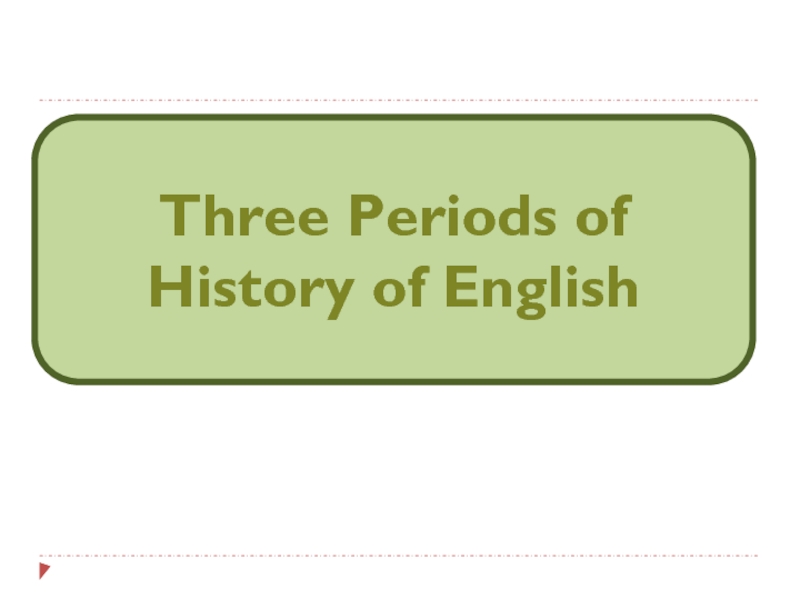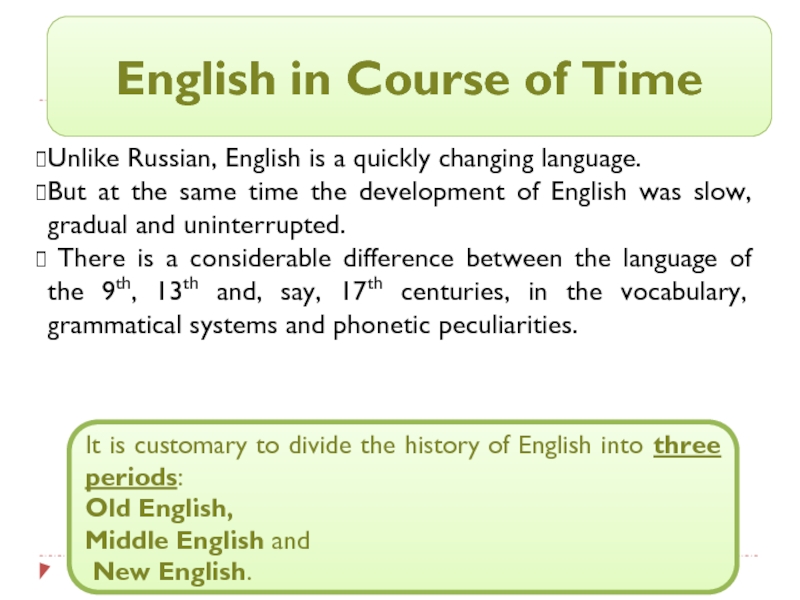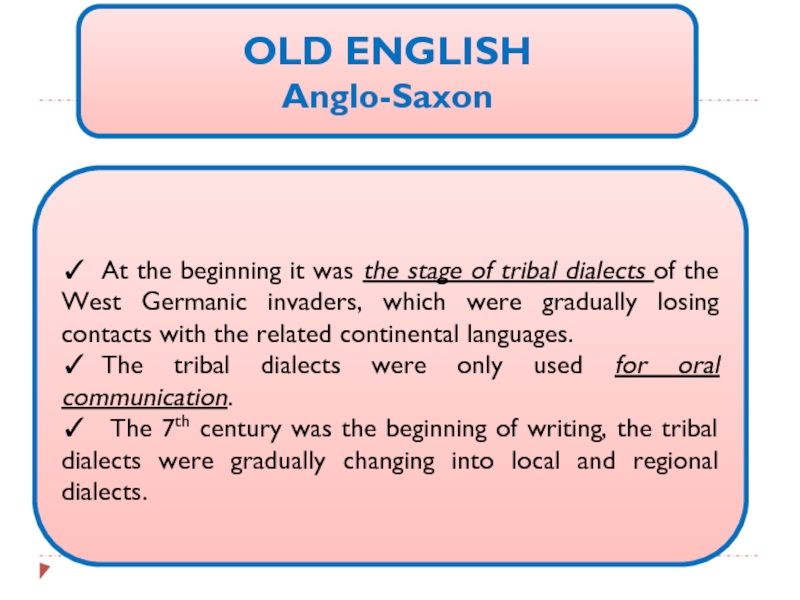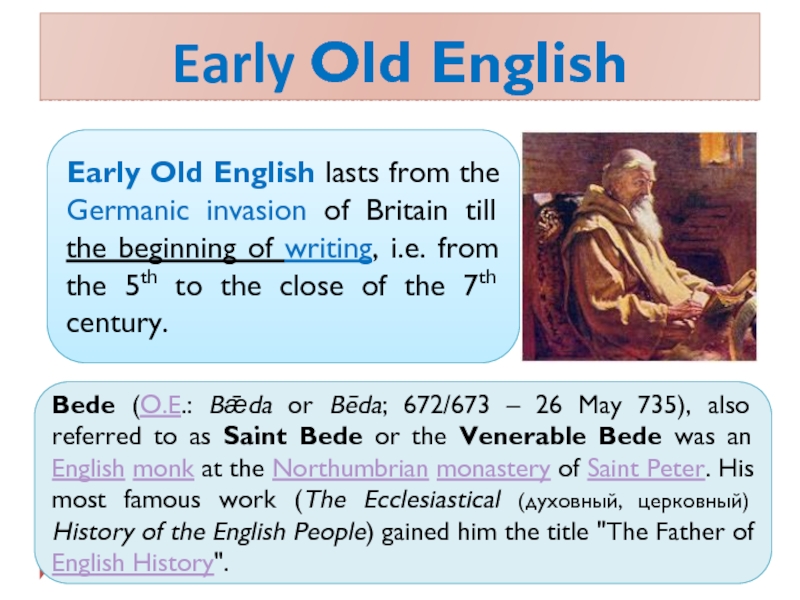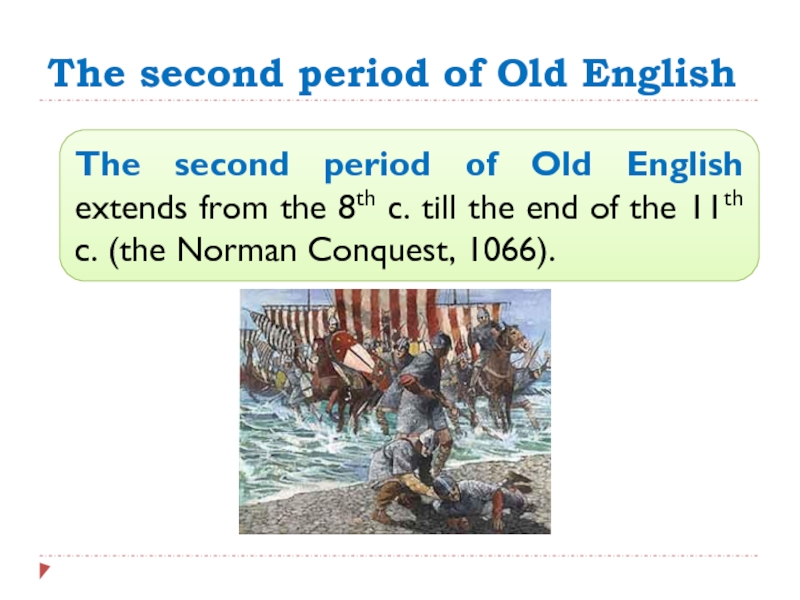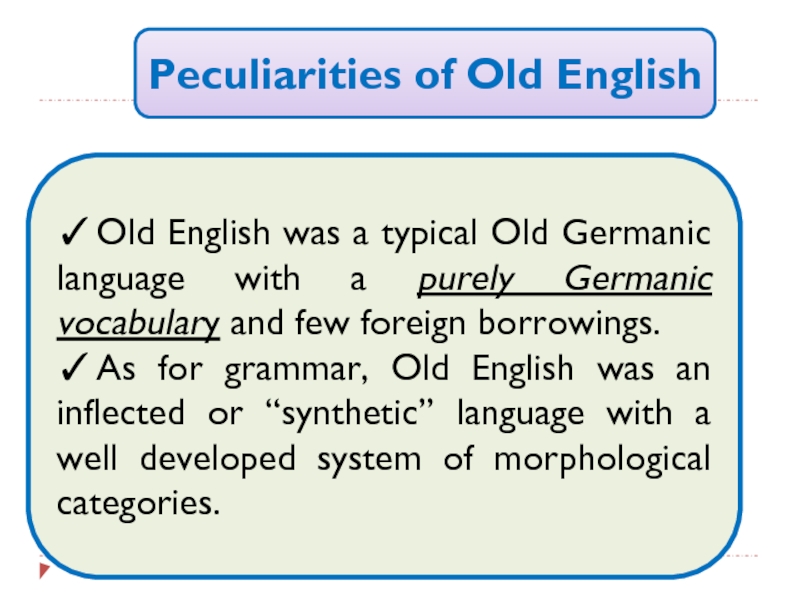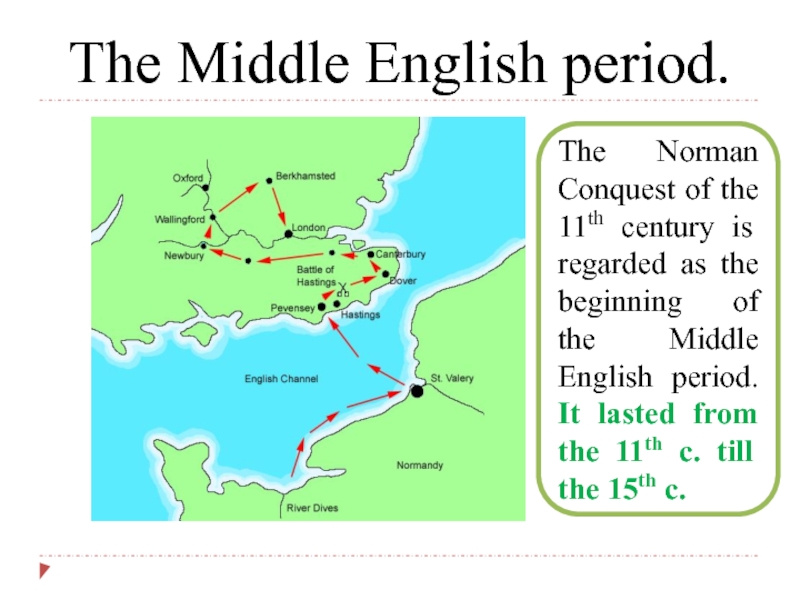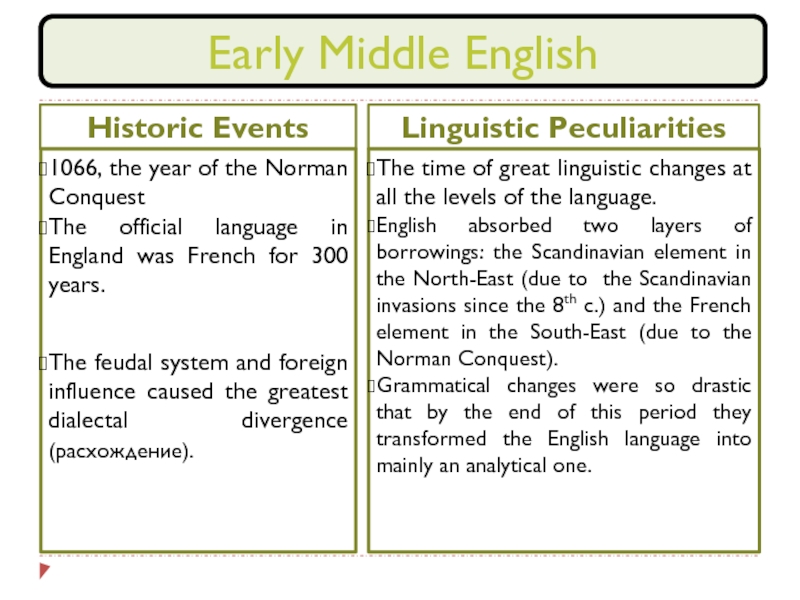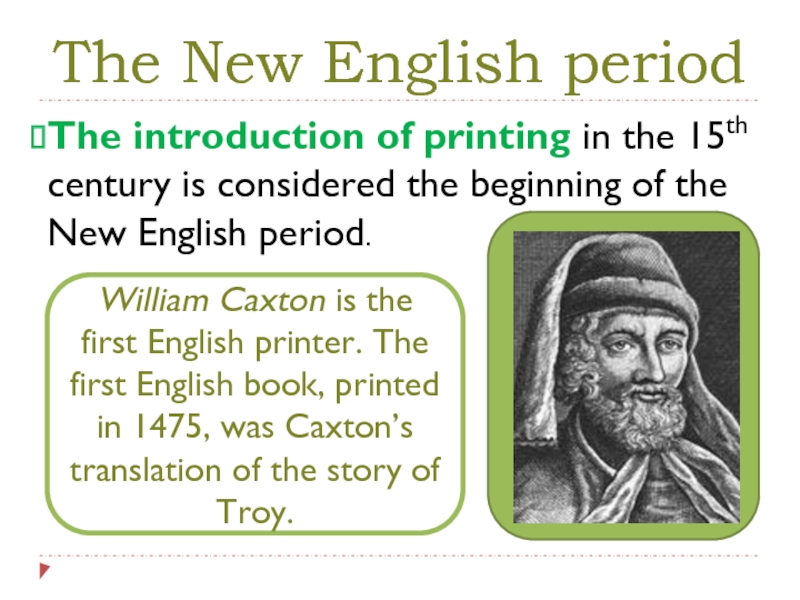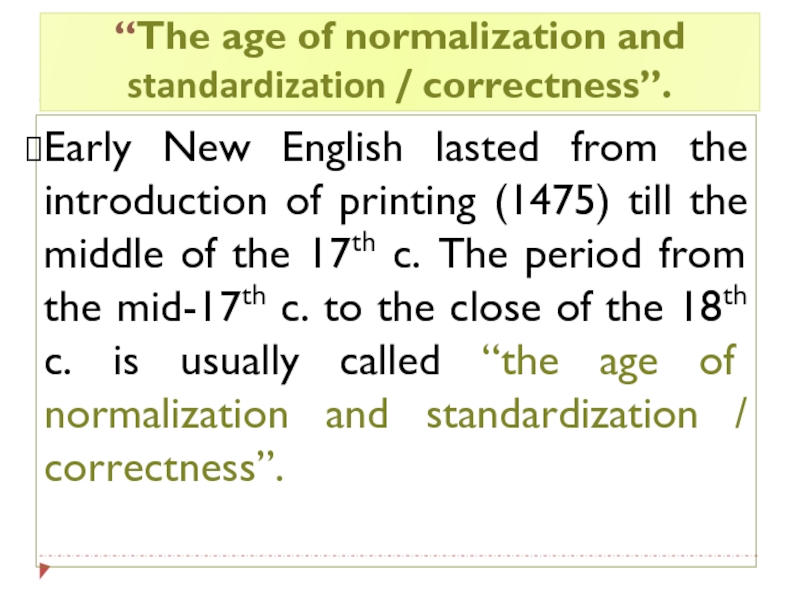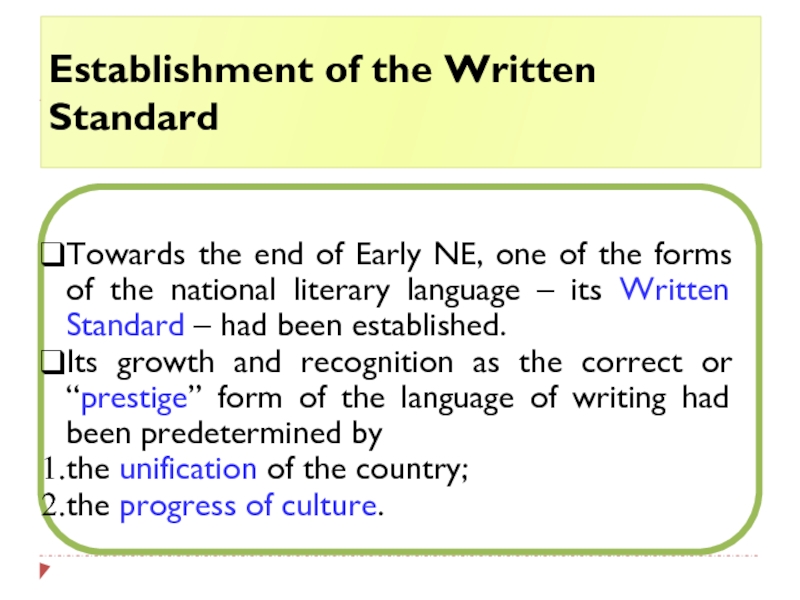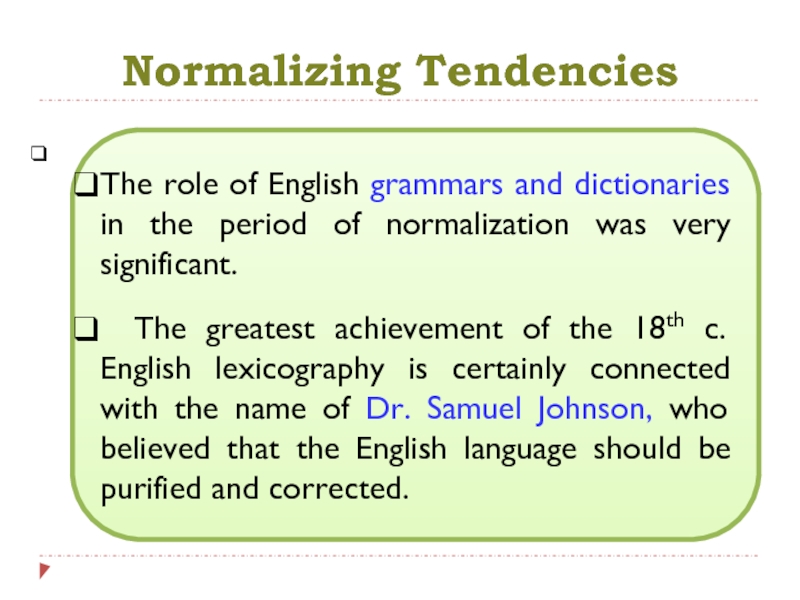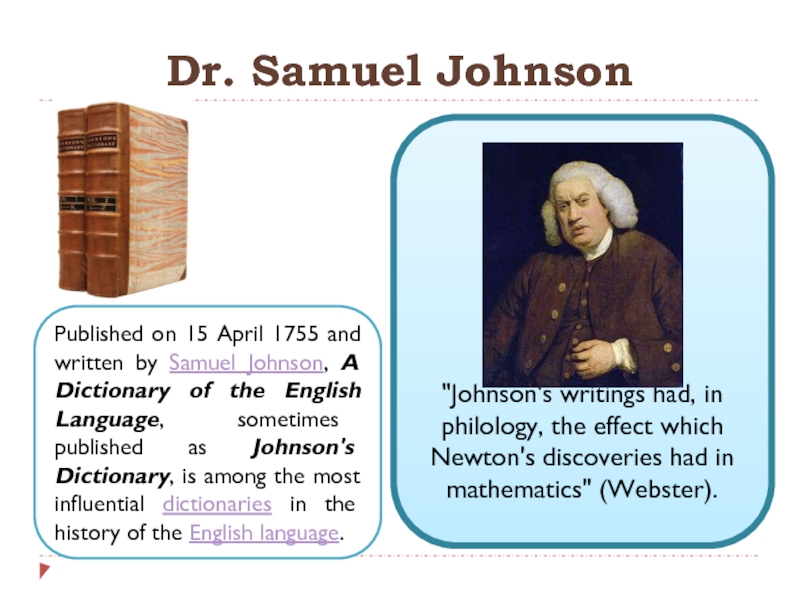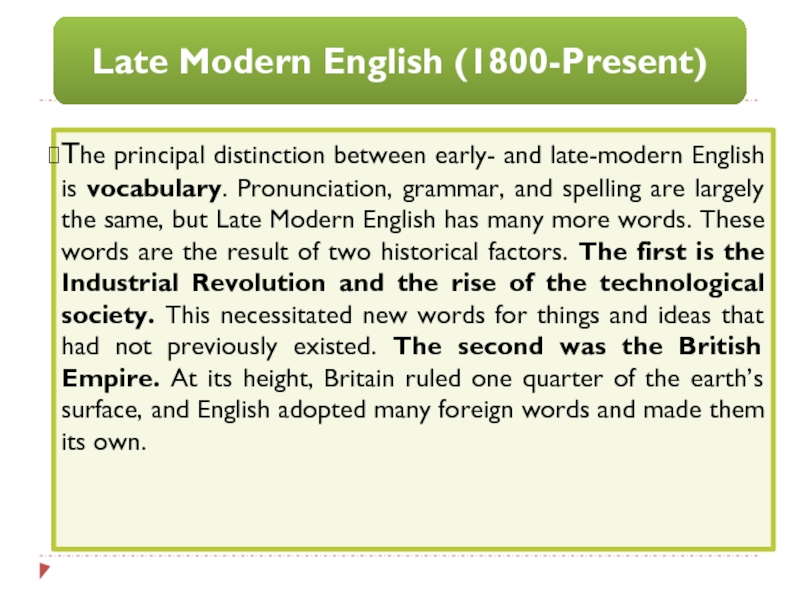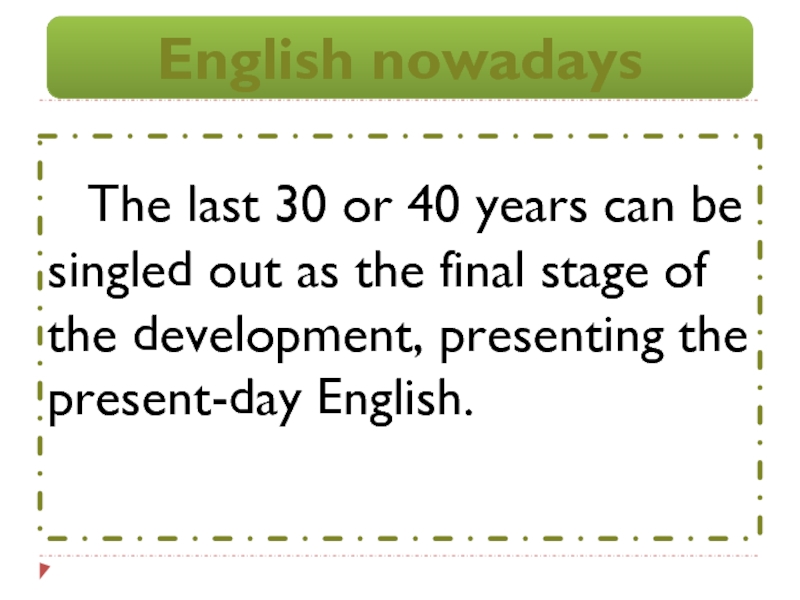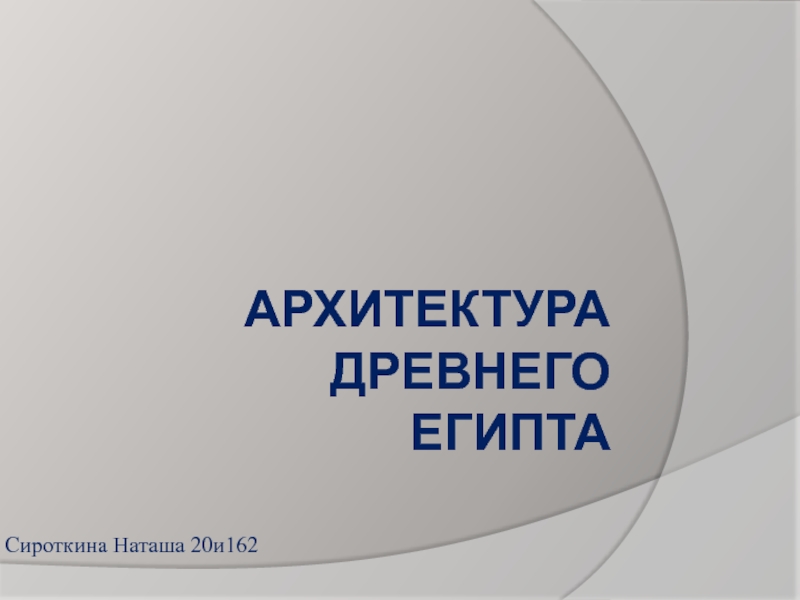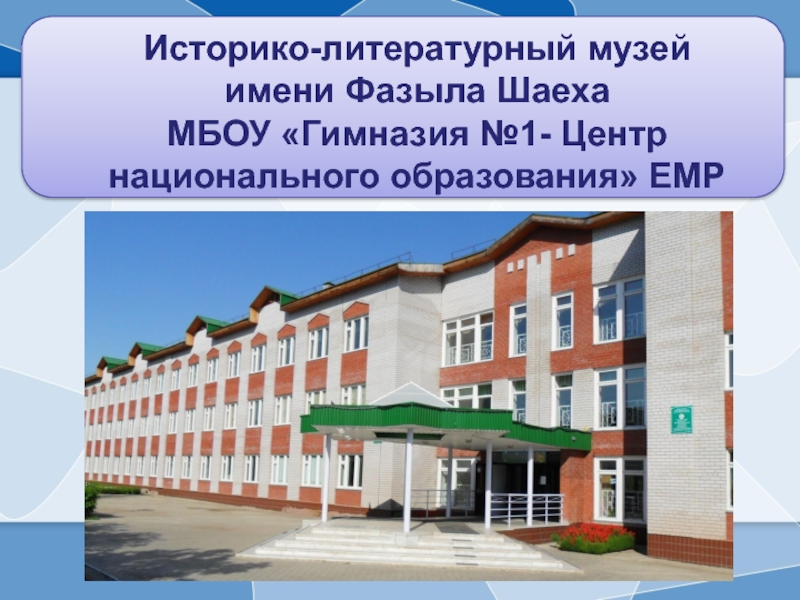- Главная
- Разное
- Дизайн
- Бизнес и предпринимательство
- Аналитика
- Образование
- Развлечения
- Красота и здоровье
- Финансы
- Государство
- Путешествия
- Спорт
- Недвижимость
- Армия
- Графика
- Культурология
- Еда и кулинария
- Лингвистика
- Английский язык
- Астрономия
- Алгебра
- Биология
- География
- Детские презентации
- Информатика
- История
- Литература
- Маркетинг
- Математика
- Медицина
- Менеджмент
- Музыка
- МХК
- Немецкий язык
- ОБЖ
- Обществознание
- Окружающий мир
- Педагогика
- Русский язык
- Технология
- Физика
- Философия
- Химия
- Шаблоны, картинки для презентаций
- Экология
- Экономика
- Юриспруденция
Three periods of the history of English презентация
Содержание
- 1. Three periods of the history of English
- 2. Unlike Russian, English is a quickly
- 3. OLD ENGLISH Anglo-Saxon
- 4. Early Old English
- 5. The second period of Old English The
- 6. Peculiarities of Old English
- 7. The Middle English period. The Norman Conquest
- 8. Historic Events Linguistic Peculiarities 1066, the
- 9. Classical Middle English
- 10. The New English period The introduction of
- 11. “The age of normalization and standardization /
- 12. Establishment of the
- 13. Normalizing Tendencies The
- 14. Dr. Samuel Johnson
- 15. The principal distinction between early- and
- 16. The last 30 or 40
Слайд 2
Unlike Russian, English is a quickly changing language.
But at the
There is a considerable difference between the language of the 9th, 13th and, say, 17th centuries, in the vocabulary, grammatical systems and phonetic peculiarities.
English in Course of Time
It is customary to divide the history of English into three periods:
Old English,
Middle English and
New English.
Слайд 3
OLD ENGLISH
Anglo-Saxon
✓ At the beginning it was the stage of tribal
✓ The tribal dialects were only used for oral communication.
✓ The 7th century was the beginning of writing, the tribal dialects were gradually changing into local and regional dialects.
Слайд 4Early Old English
Early Old English lasts from the Germanic invasion of
Bede (O.E.: Bǣda or Bēda; 672/673 – 26 May 735), also referred to as Saint Bede or the Venerable Bede was an English monk at the Northumbrian monastery of Saint Peter. His most famous work (The Ecclesiastical (духовный, церковный) History of the English People) gained him the title "The Father of English History".
Слайд 5The second period of Old English
The second period of Old English
Слайд 6
Peculiarities of Old English
✓ Old English was a typical Old Germanic
✓ As for grammar, Old English was an inflected or “synthetic” language with a well developed system of morphological categories.
Слайд 7The Middle English period.
The Norman Conquest of the 11th century is
Слайд 8
Historic Events
Linguistic Peculiarities
1066, the year of the Norman Conquest
The official language
The feudal system and foreign influence caused the greatest dialectal divergence (расхождение).
The time of great linguistic changes at all the levels of the language.
English absorbed two layers of borrowings: the Scandinavian element in the North-East (due to the Scandinavian invasions since the 8th c.) and the French element in the South-East (due to the Norman Conquest).
Grammatical changes were so drastic that by the end of this period they transformed the English language into mainly an analytical one.
Early Middle English
Слайд 9
Classical Middle English
The time of restoration of English in the
The main dialect used in writing and literature was the mixed dialect of London, which arose in the 14th century.
Слайд 10The New English period
The introduction of printing in the 15th century
William Caxton is the first English printer. The first English book, printed in 1475, was Caxton’s translation of the story of Troy.
Слайд 11“The age of normalization and standardization / correctness”.
Early New English lasted
Слайд 12
Establishment of the Written Standard
Towards the end of Early NE, one
Its growth and recognition as the correct or “prestige” form of the language of writing had been predetermined by
the unification of the country;
the progress of culture.
Слайд 13Normalizing Tendencies
The role of English grammars and dictionaries in the
The greatest achievement of the 18th c. English lexicography is certainly connected with the name of Dr. Samuel Johnson, who believed that the English language should be purified and corrected.
Слайд 14Dr. Samuel Johnson
"Johnson's writings had, in philology, the effect which Newton's
Published on 15 April 1755 and written by Samuel Johnson, A Dictionary of the English Language, sometimes published as Johnson's Dictionary, is among the most influential dictionaries in the history of the English language.
Слайд 15
The principal distinction between early- and late-modern English is vocabulary. Pronunciation,
Late Modern English (1800-Present)
Слайд 16
The last 30 or 40 years can be singled out as
English nowadays
